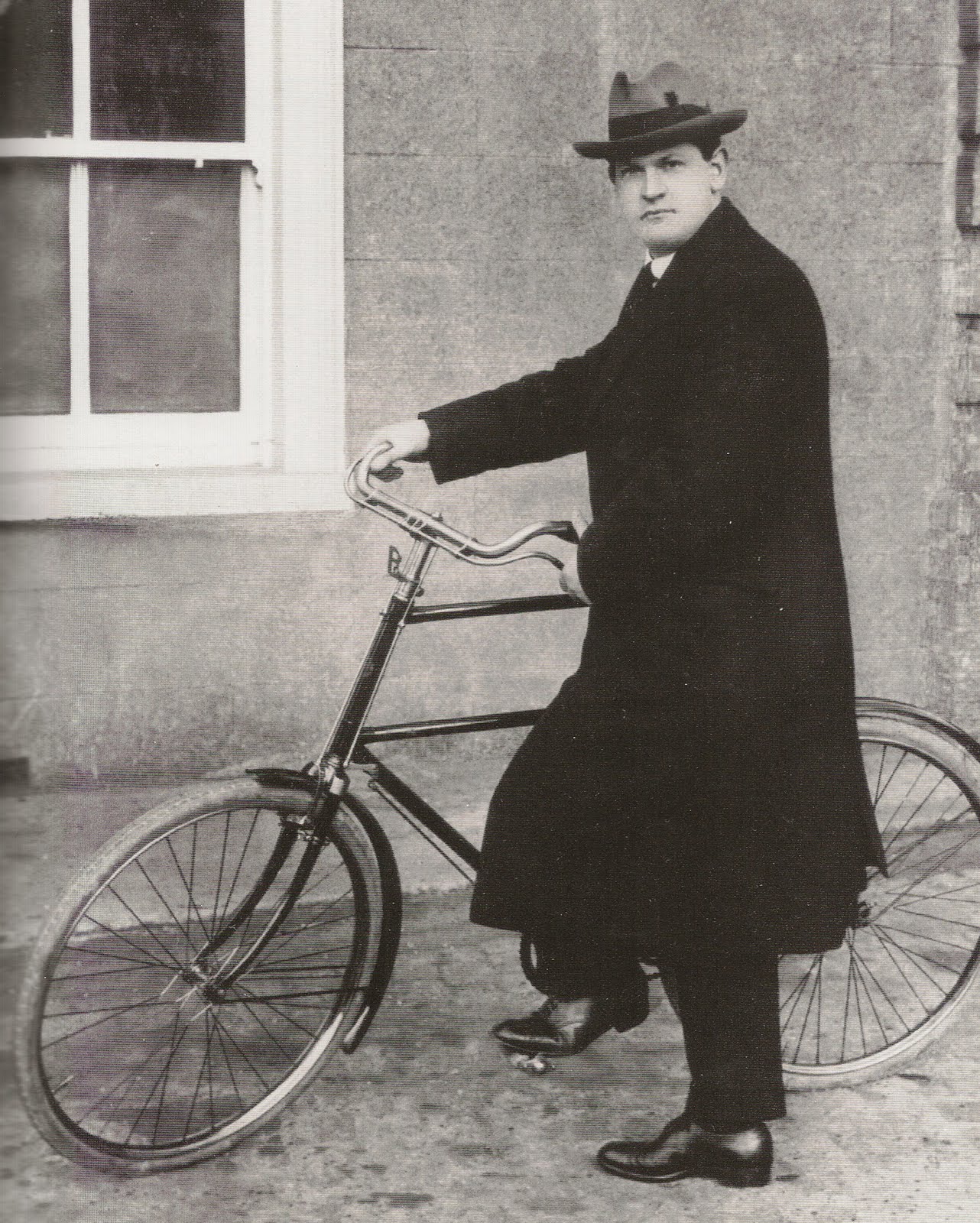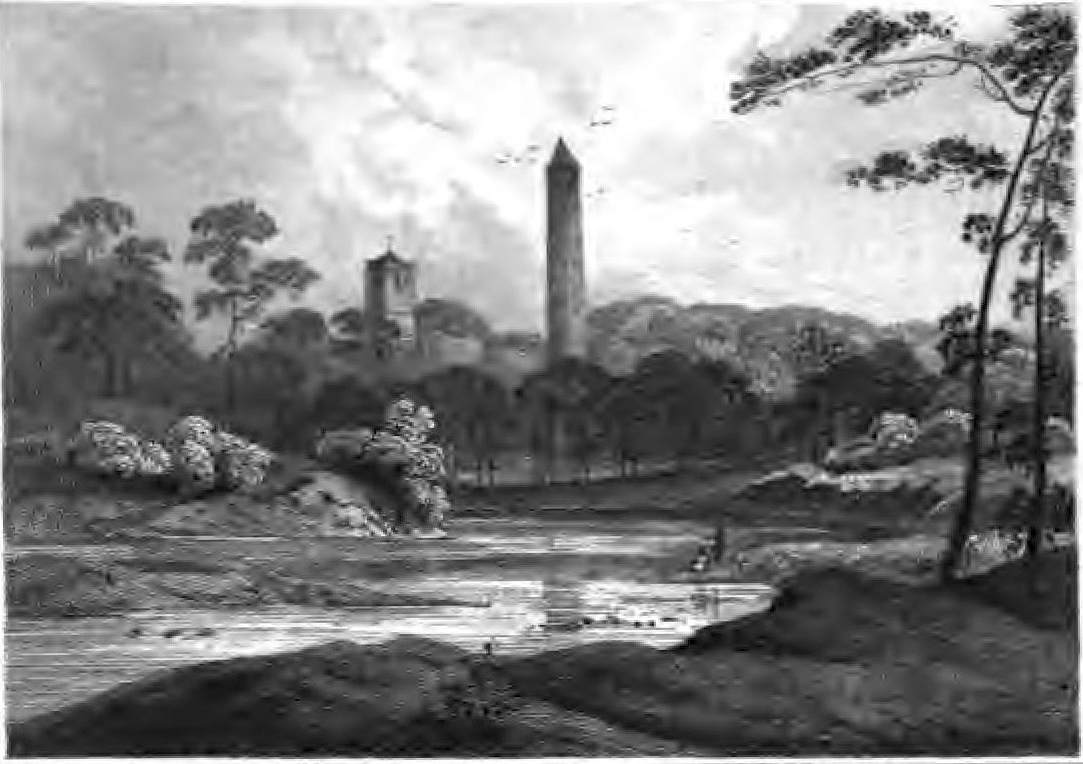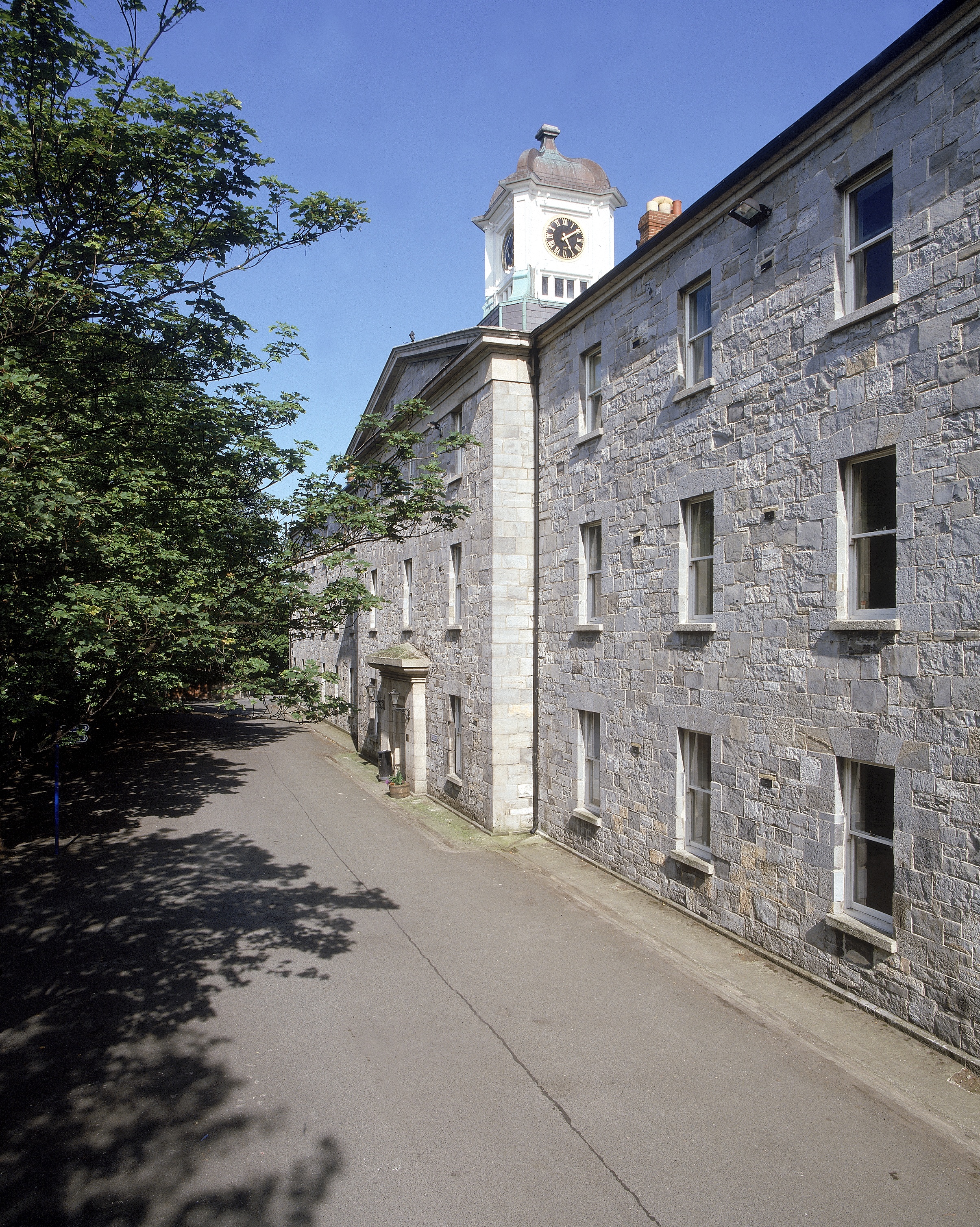|
Free State Intelligence Department – Oriel House
The Criminal Investigation Department (CID) in the Irish Free State was an armed, plain-clothed counter-insurgency police unit that operated during the Irish Civil War. It was organised separately from the unarmed Civic Guard police force. The unit was formed shortly after the truce with the British (11 July 1921) and disbanded in October 1923. Formation The CID was created by Michael Collins and many of its personnel were former Irish Republican Army fighters whom he had commanded during the Irish War of Independence. In particular, a number came from the Squad, a Dublin-based IRA assassination unit under Collins' command. The unit had close links with the Army Intelligence and with a smaller "Protective Corps" which was based in the same building, Oriel House on Westland Row, Dublin. Initially, they were put under the command of Liam Tobin. On 31 July 1922, it was taken out of the control of military intelligence and put under the brief of TD Joseph McGrath. Its command ... [...More Info...] [...Related Items...] OR: [Wikipedia] [Google] [Baidu] |
Irish Free State
The Irish Free State (6 December 192229 December 1937), also known by its Irish-language, Irish name ( , ), was a State (polity), state established in December 1922 under the Anglo-Irish Treaty of December 1921. The treaty ended the three-year Irish War of Independence between the forces of the Irish Republic – the Irish Republican Army (1919–1922), Irish Republican Army (IRA) – and The Crown, British Crown forces. The Free State was established as a dominion of the British Empire. It comprised 26 of the 32 counties of Ireland. Northern Ireland, which was made up of the remaining six counties, exercised its right under the Treaty to opt out of the new state. The Irish Free State government consisted of the Governor-General of the Irish Free State, governor-general – the viceregal representative of the King – and the Executive Council of the Irish Free State, Executive Council (cabinet), which replaced both the revolutionary Government of the 2nd Dáil, Dáil Governm ... [...More Info...] [...Related Items...] OR: [Wikipedia] [Google] [Baidu] |
Joseph McGrath (Irish Politician)
Joseph McGrath (12 August 1888 – 26 March 1966) was an Irish politician and businessman. He was a Sinn Féin and later a Cumann na nGaedheal Teachta Dála (TD) for various constituencies; Dublin St James's (1918–1921), Dublin North West (1921–1923) and Mayo North (1923–1924), and developed widespread business interests. Political career McGrath was born in Dublin in 1888. By 1916 he was working with his brother George at Craig Gardiner & Co., a firm of accountants in Dawson Street, Dublin. He worked with Michael Collins, a part-time fellow clerk and the two struck up a friendship. In his spare time McGrath worked as secretary for the Volunteer Dependents' Fund.James Alexander Mackay, ''Michael Collins: a life'', Mainstream Publishing, 1996 He soon joined the Irish Republican Brotherhood. He fought in Marrowbone Lane in the 1916 Easter Rising. McGrath was arrested after the rising, and jailed in Wormwood Scrubs and Brixton prisons in England. In the 1918 general e ... [...More Info...] [...Related Items...] OR: [Wikipedia] [Google] [Baidu] |
Special Detective Unit
The Special Detective Unit (SDU) () is the main domestic security agency of the ''Garda Síochána'', the national police force of Ireland, under the aegis of the Crime & Security Branch (CSB). It is the primary counter-terrorism and counter-espionage investigative unit within the state. The Special Detective Unit superseded the Special Branch (which they are still commonly referred to as), which itself replaced the older Criminal Investigation Department (CID), which was founded in 1921. They work in conjunction with the Defence Forces Directorate of Military Intelligence (J2) – Ireland's national intelligence service – on internal matters. The unit's headquarters are in Harcourt Street, Dublin City. The Emergency Response Unit (ERU), a specialist armed tactical unit, was a division of the SDU until 2017 when the Special Tactics and Operational Command took over command of the unit. History The Civic Guard was formed by the Provisional Government in February 1922 to ... [...More Info...] [...Related Items...] OR: [Wikipedia] [Google] [Baidu] |
Dublin Metropolitan Police
The Dublin Metropolitan Police (DMP) was the police force of Dublin in History of Ireland (1801–1923), British-controlled Ireland from 1836 to 1922 and then the Irish Free State until 1925, when it was absorbed into the new state's Garda Síochána. History 19th century The Dublin city police had been subject to major reforms in 1786 and 1808.Stanley H. Palmer, 'Drummond, Thomas (1797–1840)', Oxford Dictionary of National Biography, Oxford University Press, 2004; online edn, Jan 2008 Organised rural policing in Ireland began when Robert Peel, then Chief Secretary for Ireland, created the Peace Preservation Force in 1814. This rudimentary paramilitary police force was designed to provide policing in rural Ireland, replacing the 18th century system of watchmen, baronial constables, revenue officers and British Army, British military forces. Peel went on to found the London Metropolitan Police. In 1822, a new act created four improved "county" Constabulary, constabularies, w ... [...More Info...] [...Related Items...] OR: [Wikipedia] [Google] [Baidu] |
Executions During The Irish Civil War
The executions during the Irish Civil War took place during the Guerrilla Phase of the Irish Civil War, guerrilla phase of the Irish Civil War (June 1922 – May 1923). This phase of the war was bitter, and both sides, the government forces of the pro-treaty Irish Free State and the Irish Republican Army (1922–1969), anti-Treaty Irish Republican Army (IRA) insurgents, used executions and terror in what developed into a cycle of atrocities. From November 1922, the pro-treaty provisional later Free State government embarked on a policy of Capital punishment, executing Republican prisoners in order to bring the war to an end. Many of those killed had previously been allies, and in some cases close friends (during the Irish War of Independence 1919–1921), of those who ordered their deaths in the civil war. In addition, government troops also Summary execution, summarily executed at least 130 prisoners in the field. The executions of prisoners left a lasting legacy of bitterness in ... [...More Info...] [...Related Items...] OR: [Wikipedia] [Google] [Baidu] |
Thomas Derrig
Thomas Derrig (; 26 November 1897 – 19 November 1956) was an Irish Fianna Fáil politician who served as Minister for Lands from 1939 to 1943 and 1951 to 1954, Minister for Education from 1932 to 1939 and 1940 to 1948 and Minister for Posts and Telegraphs in September 1939. He served as a Teachta Dála (TD) from 1921 to 1923 and 1927 to 1957. Early life Derrig was born on 26 November 1897, in Westport, County Mayo, the son of Patrick Derrig and Winifred Derrig (née Sammon). He was educated locally and later at University College Galway. Revolutionary period During his time in college he organised a corps of the Irish Volunteers. Derrig did not take part in the 1916 Easter Rising but was arrested in the aftermath. He was imprisoned in Woking, Wormwood Scrubs and Frongoch internment camp. He was arrested in July 1918, and was accused of attempting to disarm a soldier. He was sentenced to five months imprisonment by a court in Belfast. When he was released in November 1918 ... [...More Info...] [...Related Items...] OR: [Wikipedia] [Google] [Baidu] |
Noel Lemass
Noel Thomas Lemass (14 February 1929 – 13 April 1976) was an Irish Fianna Fáil politician who served as Parliamentary Secretary to the Minister for Finance from 1969 to 1973. He served as a Teachta Dála (TD) for Dublin South-West from 1956 to 1976. Early life Born in Dublin in 1929, Lemass was the son of Seán Lemass, a Fianna Fáil TD, and Kathleen Lemass (née Hughes). He was named after his uncle, a victim of the Irish Civil War in the early 1920s. Lemass was educated at Catholic University School, Leeson Street in Dublin and later at Newbridge College in County Kildare. Against his father's wishes, rather than attend university, he undertook business training and later became an executive member and branch secretary of the Irish Commercial Travellers' Association. Political career Lemass followed his father into politics in 1955, when he was elected to Dublin City Council. He was elected to Dáil Éireann in a by-election in Dublin South-West the following year. The ... [...More Info...] [...Related Items...] OR: [Wikipedia] [Google] [Baidu] |
Clondalkin
Clondalkin () is a suburban village in County Dublin, Republic of Ireland, Ireland, approximately west of Dublin city centre. It is within the administrative jurisdiction of South Dublin County Council, South Dublin. Clondalkin is also the name of a Civil parishes in Ireland, civil parish and a townland in the ancient Barony (Ireland), barony of Uppercross, and is also used in relation to some local religious parishes. The population of all Electoral division (Ireland), electoral divisions labelled as Clondalkin was 47,938 as of the 2022 census. History Prehistory Neolithic tribes first settled in the area around 7,600 years ago, taking advantage of the site's location on the River Camac, overlooking the River Liffey and the inland pass between the mountains and the river. Evidence of the presence of the Cualann Celtic people (an early tribe possibly the Cauci on Ptolemy's world map) can be found in various mounds and raths. Christian era Clondalkin is believed to have been ... [...More Info...] [...Related Items...] OR: [Wikipedia] [Google] [Baidu] |
Drumcondra, Dublin
Drumcondra () is a residential area and inner suburb on the Northside (Dublin), Northside of Dublin, Republic of Ireland, Ireland. It is administered by Dublin City Council. The River Tolka and the Royal Canal flow through the area. History The village of Drumcondra was the central area of the civil parish of Clonturk, and the two names were used equally for the religious and civil parishes, but the modern suburban district of Drumcondra also encompasses the old Parish of St. Mary. Clonturk had been an alternative name for Drumcondra and the wider area for some time. The Cat and Cage Pub, on the corner of Drumcondra Road and Church Avenue, was the site of an old postal stop and the point at which rebels, during the 1798 rebellion, seized a postal cart in order to signal to others in North County Dublin to revolt. The southern stretch of the Slige Midluachra passed through Drumcondra and on into the City where it crossed the Liffey at a location known as the "ford of the hurdle ... [...More Info...] [...Related Items...] OR: [Wikipedia] [Google] [Baidu] |
Griffith Barracks
Griffith Barracks ( Irish: ''Dún Uí Ghríofa'') is a former military barracks on the South Circular Road, Dublin, Ireland. History The site, which had been known as Grimswoods Nurseries, was developed as a remand prison, designed by Francis Johnston to relieve pressure on the Newgate Prison, Dublin and completed in 1813. On the reorganisation of the government following Thomas Drummond's appointment in 1835 as Under-Secretary for Ireland, it became a male penitentiary known as the Richmond Bridewell. The motto above the door read ''Cease to do evil; learn to do well''. In 1844 it was linked with Catholic emancipation and the subsequent movement for Repeal of the Act of Union: one of its most famous occupants was the Liberator, Daniel O'Connell. Prominent Irish Nationalist leaders such as William Smith O'Brien, Thomas Francis Meagher (later Acting Governor of Montana) and James Stephens (founder of the IRB) were among its famous historical prisoners. Another distin ... [...More Info...] [...Related Items...] OR: [Wikipedia] [Google] [Baidu] |
Tom Ennis
Tom or TOM may refer to: * Tom (given name), including a list of people and fictional characters with the name. Arts and entertainment Film and television * ''Tom'' (1973 film), or ''The Bad Bunch'', a blaxploitation film * ''Tom'' (2002 film), a documentary film * ''Tom'' (American TV series), 1994 * ''Tom'' (Spanish TV series), 2003 Music * ''Tom'', a 1970 album by Tom Jones * Tom drum, a musical drum with no snares * Tom (Ethiopian instrument), a plucked lamellophone thumb piano * Tune-o-matic, a guitar bridge design Places * Tom, Oklahoma, US * Tom (Amur Oblast), a river in Russia * Tom (river), in Russia, a right tributary of the Ob Science and technology * A male cat * A male wild turkey * Tom (pattern matching language), a programming language * TOM (psychedelic), a hallucinogen * Text Object Model, a Microsoft Windows programming interface * Theory of mind (ToM), in psychology * Translocase of the outer membrane, a complex of proteins Transportation * ''Tom'' ( ... [...More Info...] [...Related Items...] OR: [Wikipedia] [Google] [Baidu] |
Irish Republican Police
The Irish Republican Police (IRP; ) was the police force of the 1919–1922 Irish Republic and was administered by the Department for Home Affairs of that government. Foundation The IRP was founded between April and June 1920 under the authority of Dáil Éireann. It was initiated by Richard Mulcahy the IRA Chief of Staff, and Cathal Brugha, Minister for Defence. It was handed over to the Minister for Home Affairs Arthur Griffith and later to his successor Austin Stack. Simon Donnelly, an IRA Staff Officer at GHQ, was transferred to the Department of Home Affairs as Chief of Police. At this time there were only six full-time Republican Police in Dublin city. Donnelly immediately instructed that a paid full-time policeman be appointed to each of the seventy-two IRA Brigade areas. They were chosen by the Brigades, and most though not all were IRA volunteers. The purpose of the IRP was to provide security for the Republican Courts, to enforce their judgements, to put into eff ... [...More Info...] [...Related Items...] OR: [Wikipedia] [Google] [Baidu] |




